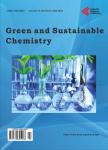Effect of a High Silver Stress on the Element Transfers from a Smectite-Type Clay Substrate to Plants
Effect of a High Silver Stress on the Element Transfers from a Smectite-Type Clay Substrate to Plants作者机构:Department of Geology Kansas State University Manhattan USA Laboratoire d’Hydrologie et de Géochimie de Strasbourg (CNRS-UdS) Strasbourg France Sultan Qaboos University Muscat Oman
出 版 物:《Green and Sustainable Chemistry》 (绿色与可持续化学(英文))
年 卷 期:2012年第2卷第2期
页 面:76-89页
学科分类:1002[医学-临床医学] 100214[医学-肿瘤学] 10[医学]
主 题:Ag Pollution Plant-Growth Experiment Smectite-Type Clay Substrate Soil-Plant Element Transfers REE Fractionation
摘 要:Two species of radishes, Raphanus sativus and Raphanus raphanistrum, were grown in the laboratory in the same substrate consisting of a smectite-type clay, which was watered at the beginning of the experience with 50 ml of a solution containing either none or 1000, 2000 or 4000 mg/L of AgNO3, respectively. Occurrence of the toxic metal in the substrate outlines higher element uptakes by the cultivated species Raphanus sativus than by the wild species Raphanus raphanistrum, except for the highest degree of Ag pollution. After a one-month growth in the Ag-polluted substrate, Raphanus sativus was depleted in most of the major, trace and rare-earth elements, except for Al, Fe, Th, Ag and U that increased in the radishes from substrate polluted by 2000 mg/L of AgNO3, and Sr, Co, Ni, U and Ag that increased in the radishes from substrate polluted by 4000 mg/L of AgNO3. Raphanus raphanistrum was enriched in all elements except Si, Na, Rb and K in the polluted substrate. The uptake was monitored by a cation-exchange process in the rhy-zosphere between mineral particles and the watering solution in the presence of various enzymes with specific activities that induced a variable uptake with the REEs being even fractionated. These activities most probably depend on combined factors, such as the plant species, and the chemical and physical properties of the substrate. The results obtained here reveal also that accumulation of nutrient elements and others in the plants is not uniform at a given Ag pollution of the substrate and therefore at a given Ag contamination in the same plant species.



